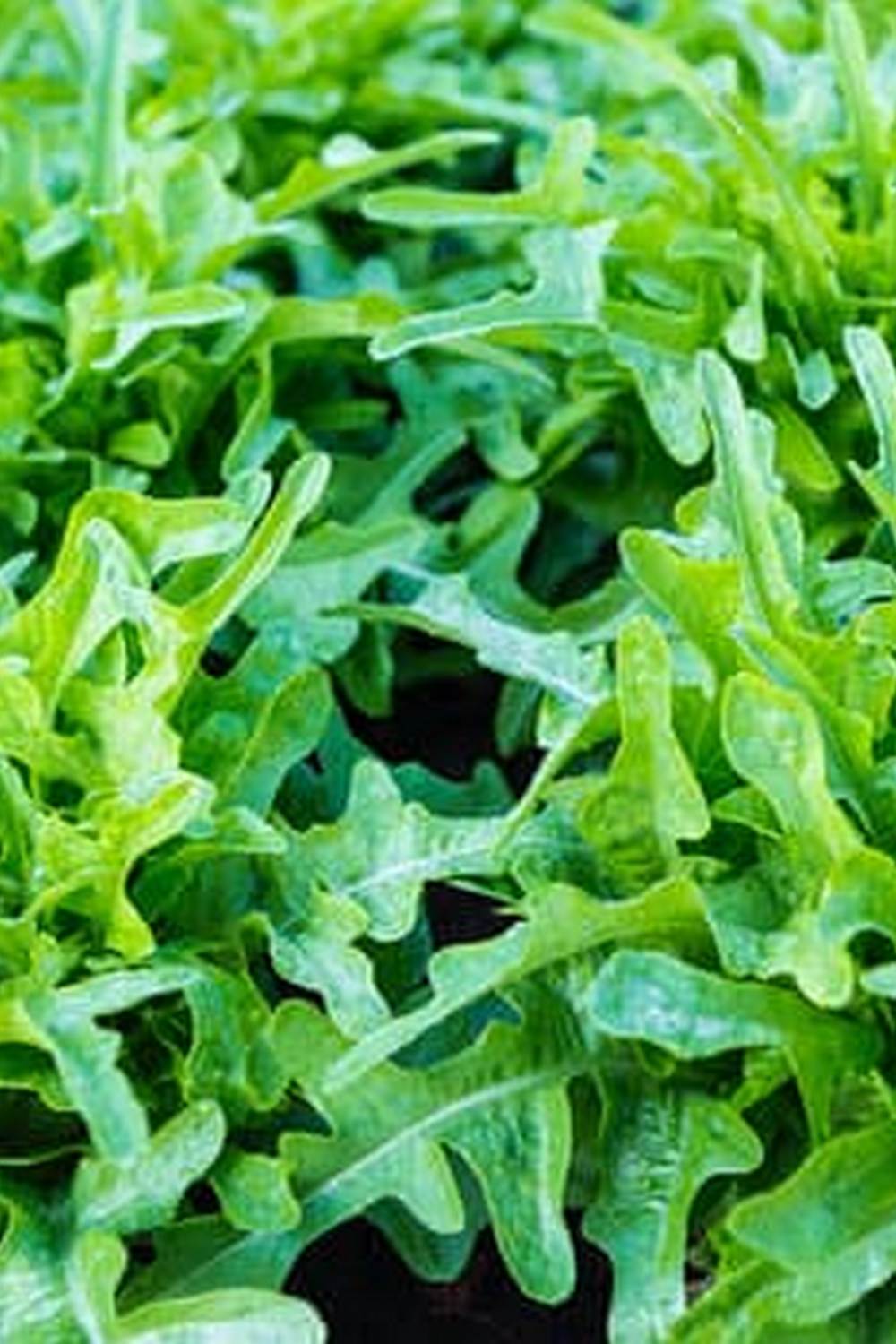Are you wondering how to prep soil for a vegetable gardening? Soil preparation is a crucial step in ensuring the success of your vegetable garden. The quality of your soil directly impacts the health and productivity of your plants. By taking the time to properly prepare your soil, you can create an optimal growing environment for your vegetables.
Understanding the composition of your soil is essential. Factors such as pH levels, texture, and nutrient content play a significant role in determining which vegetables will thrive in your garden. Testing your soil using DIY test kits or professional testing services can provide valuable insights into its current state and help you make informed decisions about necessary amendments.
Clearing the area where you plan to plant is another important aspect of soil preparation. Removing weeds, rocks, and debris creates a clean canvas for planting and prevents competition for nutrients among your vegetable crops. After clearing the area, adding organic matter such as compost, manure, or other natural amendments can improve soil structure and fertility, setting the stage for healthy plant growth.
Understanding Soil Composition
When it comes to preparing soil for a successful vegetable garden, one of the key aspects to consider is understanding the composition of the soil itself. Soil composition refers to the pH levels, texture, and nutrient content present in the soil, all of which play a crucial role in determining the health and growth potential of your plants. Here are some steps on how to prep soil for a vegetable gardening by focusing on understanding soil composition:
1. pH Levels: The pH level of the soil indicates whether it is acidic, neutral, or alkaline, with most vegetables thriving in slightly acidic to neutral soils.
You can test the pH level of your soil using DIY test kits available at gardening stores or by sending a sample to a professional testing lab. Once you determine the pH level, you can adjust it by adding lime to raise the pH or sulfur to lower it to the desired range for optimal vegetable growth.
2. Soil Texture: The texture of the soil refers to its composition of sand, silt, and clay particles. Ideal vegetable garden soil should have a good balance of these particles to allow for proper drainage while retaining enough moisture and nutrients for plant uptake. You can improve soil texture by incorporating organic matter such as compost, manure, or peat moss into the soil.
3. Nutrient Content: Different vegetables have varying nutrient requirements for healthy growth. Conducting a soil test will also provide valuable information on the nutrient content present in your soil. Based on the results, you can add fertilizers rich in essential nutrients like nitrogen, phosphorus, and potassium to ensure that your plants have access to everything they need for robust growth.
By understanding and addressing these components of soil composition effectively, you can create an ideal growing environment for your vegetable garden and set yourself up for a bountiful harvest.
Soil Testing Methods
Soil testing is a critical step in preparing your soil for a successful vegetable garden. By understanding the composition of your soil, you can make informed decisions about what amendments are needed to create the optimal growing conditions for your plants. There are several methods available for testing soil, ranging from DIY test kits to professional laboratory testing.
One common way to test soil is using DIY test kits, which are widely available at garden centers and online. These kits typically come with instructions on how to collect soil samples and conduct tests for pH levels, nutrient content, and sometimes even texture. While DIY test kits are convenient and affordable, they may not always provide the most accurate results compared to professional testing methods.
For more precise and detailed information about your soil, consider sending a sample to a professional laboratory for testing. Professional testing can give you specific data on pH levels, nutrient deficiencies, and recommendations for amendments based on the results. This option is especially beneficial if you have complex soil issues or if you want to fine-tune your soil preparation for optimal vegetable growth.
| Soil Testing Methods | Pros | Cons |
|---|---|---|
| DIY Test Kits | Affordable and convenient | May not be as accurate as professional testing |
| Professional Testing | Precise data and recommendations | More expensive than DIY kits |
Interpreting the results of your soil tests is equally important. Pay close attention to pH levels, as this will directly affect the availability of nutrients to your plants. If your soil is too acidic or alkaline, you can adjust it by adding lime (to raise pH) or sulfur (to lower pH).
Nutrient deficiencies can also be addressed by incorporating organic matter like compost or well-rotted manure into the soil. By understanding how to interpret your soil test results, you can tailor your soil preparation efforts to meet the specific needs of your vegetable garden.
Clearing the Area
Once the weeds are cleared, it’s time to address rocks and debris that can hinder plant growth. Large rocks can impede root development and make it challenging to establish healthy plants. Remove any rocks or stones from the planting area and set them aside for other landscaping purposes if desired. Additionally, clear away any sticks, branches, or other debris that may have accumulated on the soil surface.
Creating a clean planting space not only improves the aesthetic appeal of your vegetable garden but also sets the stage for healthy plant growth. By removing weeds, rocks, and debris, you give your vegetable plants the best chance at thriving in nutrient-rich soil without competition from unwanted elements. Taking the time to clear the area properly will pay off in the long run with bountiful harvests of delicious homegrown produce.
| Benefit | Tip |
|---|---|
| Improved plant growth | Manually pull out weeds by hand |
| Aesthetic appeal | Use a garden hoe or weeding tool for efficiency |
| Healthy root development | Remove large rocks and debris from the planting area |
Adding Organic Matter
One of the key steps in preparing soil for successful vegetable gardening is by adding organic matter. Organic matter helps improve soil structure, provides essential nutrients for plant growth, and enhances overall soil health. Here are some ways on how to prep soil for a vegetable gardening by incorporating composting, manure, and other natural amendments:
- Composting: Start by creating a compost pile using kitchen scraps, yard waste, and other organic materials. Allow the compost to decompose over time, turning it occasionally to aerate and speed up the process. Once the compost is ready, mix it into the existing soil in your garden beds to enrich the soil with nutrients.
- Manure: Consider using well-rotted manure from livestock such as cows, horses, or chickens as a natural fertilizer for your vegetable garden. Make sure the manure is aged properly to avoid burning plants with excess nitrogen. Mix the manure into the soil before planting or use it as a topdressing around established plants.
- Natural Amendments: In addition to compost and manure, other natural amendments can help improve soil structure and fertility. This includes materials like leaf mold, grass clippings, straw, peat moss, or shredded bark. Incorporating these additives into your soil will promote better drainage, water retention, and nutrient availability for your vegetables.
By adding organic matter to your soil through methods like composting, utilizing manure, and incorporating natural amendments, you can create a healthy foundation for your vegetable garden to thrive. Remember to mix these materials well into the existing soil before planting your vegetables to ensure they have access to essential nutrients and moisture throughout their growth cycle. With proper preparation and care of your soil, you can set yourself up for a bountiful harvest of delicious homegrown produce.
Tilling and Aerating
Importance of Tilling and Aerating
Tilling and aerating are essential steps in preparing the soil for a successful vegetable garden. Compacted soil restricts root growth, decreases nutrient uptake, and hinders water drainage. By tilling the soil, you break up compacted layers and create a looser, more aerated environment for plant roots to thrive. Proper aeration allows oxygen to reach the root zone, promoting healthy microbial activity and improving overall soil structure.
Techniques for Tilling
There are several techniques you can use to till the soil effectively. One common method is using a mechanical tiller, which quickly breaks up compacted soil and mixes in organic matter. For smaller areas or raised beds, hand tools like a shovel or garden fork can be used to turn the topsoil gently.
It’s important not to over-till the soil, as this can disrupt beneficial organisms and lead to erosion. Aim to till only when necessary and avoid excessive disturbance of the soil structure.
Aeration for Improved Drainage
In addition to tilling, proper aeration helps improve drainage in your vegetable garden beds. Compacted soil prevents water from infiltrating properly, leading to standing water and potentially root rot issues. You can aerate the soil by using a garden fork or an aerator tool to create small holes throughout the planting area.
This allows excess water to drain more efficiently and prevents waterlogged conditions that can harm your vegetable plants. Regularly aerating the soil will promote healthier root development and better overall crop yield.
By following these tips on how to prep soil for a vegetable gardening effectively through tilling and aerating, you set the foundation for a thriving garden full of nutritious produce. Remember that healthy soil is key to successful gardening, so take the time to prepare your planting beds properly before sowing seeds or transplanting seedlings. With well-aerated, nutrient-rich soil, your vegetables will have the best chance at flourishing throughout the growing season.
Adjusting Soil pH
The pH level of soil plays a crucial role in the overall health and productivity of your vegetable garden. Different plants thrive in different pH levels, so it is essential to adjust the soil’s acidity or alkalinity accordingly. The ideal pH range for most vegetables is between 6.0 and 7.0. If your soil tests below or above this range, you will need to make adjustments using either lime to raise the pH or sulfur to lower it.
To increase the pH level of acidic soil, commonly found in regions with heavy rainfall, you can apply agricultural lime. It is recommended to do a soil test first to determine the amount of lime needed based on your current pH level and soil type. Spread the lime evenly over the planting area and work it into the soil thoroughly before planting your vegetables. Be sure to follow the manufacturer’s instructions regarding application rates and timing.
On the other hand, if your soil is too alkaline, typically found in arid regions, you can lower the pH by applying elemental sulfur. Again, conduct a soil test beforehand to determine how much sulfur is required based on your specific conditions.
Apply the sulfur according to package instructions, working it into the top few inches of soil. Keep in mind that adjusting soil pH is not an instant process – it may take several months for the full effect to be seen, so be patient with your garden as you monitor changes in plant growth and vigor.
Fertilizing
Choosing the Right Fertilizers
When selecting fertilizers for your vegetable garden, it’s essential to consider the specific needs of your plants. Different vegetables require different nutrients at various growth stages. Look for fertilizers that are specifically formulated for vegetables or plant-based organic options. You can choose from granular, liquid, or slow-release fertilizers based on your preferences and gardening practices.
Understanding NPK Ratios
One crucial aspect to consider when choosing fertilizers is the NPK ratio listed on the packaging. NPK stands for nitrogen, phosphorus, and potassium – three essential nutrients that plants need in varying amounts. For leafy green vegetables like lettuce and spinach, a fertilizer higher in nitrogen is beneficial for lush foliage growth.
Root vegetables like carrots and beets will benefit from phosphorus-rich fertilizers for strong root development. Fruiting vegetables such as tomatoes and peppers thrive with a potassium-rich fertilizer to support flower and fruit formation.
Applying Fertilizers at the Right Time
Timing is key when it comes to applying fertilizers to your vegetable garden. Before planting, mix in a balanced fertilizer into the soil according to package instructions to provide an initial nutrient boost for seedlings or transplants. As your plants grow, apply additional fertilizer every 4-6 weeks during the growing season based on their specific needs and growth stage. Be sure not to over-fertilize, as this can lead to nutrient imbalances or burn your plants’ roots.
Mulching
One key benefit of mulching is weed suppression. A layer of mulch helps to smother weeds by blocking out sunlight and preventing their seeds from germinating. This reduces the need for hand-weeding or harmful herbicides, ultimately saving you time and effort in maintaining your garden. Additionally, by keeping weeds at bay, mulch allows your vegetable plants to thrive without competing for water, nutrients, and space.
In addition to weed suppression, mulching also aids in moisture retention. By covering the soil with a layer of organic matter such as straw, wood chips, or compost, you can reduce water evaporation from the surface. This helps to maintain consistent soil moisture levels and reduces the frequency of watering during dry periods. Proper moisture retention is essential for healthy plant growth, especially during hot summer months when water scarcity can impact vegetable production.
Moreover, mulching plays a significant role in regulating soil temperatures. In extreme weather conditions, such as heatwaves or frosty nights, mulch acts as an insulating barrier that protects plant roots from temperature fluctuations. This stability in soil temperature promotes root development and overall plant vigor. By utilizing mulch in your vegetable garden beds, you create a conducive environment for plants to thrive and produce bountiful harvests throughout the growing season.
Planning Planting Beds
In conclusion, preparing the soil for vegetable gardening is a crucial step that can significantly impact the success of your harvest. By understanding the importance of soil composition, testing methods, and necessary adjustments like clearing the area of debris and adding organic matter, you are setting yourself up for a bountiful garden. Tilling and aerating the soil, adjusting pH levels, fertilizing appropriately, and mulching to suppress weeds are all essential components of ensuring optimal growth for your vegetables.
One of the key aspects that can make a big difference in your vegetable garden is proper planning of planting beds. Whether you choose raised beds, traditional rows, or mounds, each method has its own set of advantages in terms of space utilization, drainage, and pest control.
Raised beds are ideal for improving drainage and offering better control over soil quality, while rows are great for large-scale plantings and efficiency in maintenance. Mounds can help with water runoff and even distribution of nutrients.
To sum up, knowing how to prep soil for a vegetable garden involves a combination of science and practicality. By following the steps outlined – from testing your soil to creating efficient planting beds – you will be well on your way to a successful harvest. Remember that healthy soil is the foundation for healthy plants, so investing time and effort into soil preparation will pay off in the long run with abundant vegetables ready for harvesting.
Frequently Asked Questions
How Do You Prepare Soil for Planting Vegetables?
To prepare soil for planting vegetables, start by clearing the area of any weeds, rocks, or debris. Then, loosen the soil using a garden fork or tiller to improve drainage and root penetration. Adding compost or organic matter can help improve soil fertility and structure, providing essential nutrients for healthy plant growth.
How Do I Prepare My Garden Bed for Vegetables?
When preparing a garden bed for vegetables, begin by removing any existing vegetation and debris. Loosen the soil to a depth of at least 6-8 inches to promote good root development.
Incorporate organic matter like compost or aged manure to enrich the soil with nutrients that will support healthy plant growth. Consider testing the pH level of the soil to determine if any amendments are needed.
How Do You Fertilize Soil Before Planting Vegetables?
Before planting vegetables, it’s essential to fertilize the soil properly to provide plants with necessary nutrients for growth. Choose a balanced fertilizer with equal parts nitrogen, phosphorus, and potassium for overall plant health.
Apply the fertilizer according to package instructions and work it into the soil before planting. Avoid over-fertilizing as it can lead to nutrient imbalances and harm plant growth rather than helping it thrive in your garden.

If you’re looking to get into vegetable gardening, or are just looking for some tips on how to make your current garden better, then you’ve come to the right place! My name is Ethel and I have been gardening for years. In this blog, I’m going to share with you some of my best tips on how to create a successful vegetable garden.





